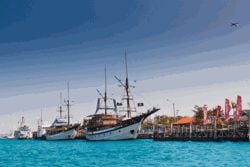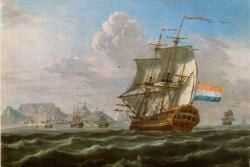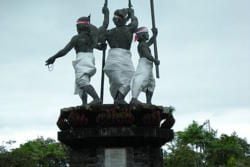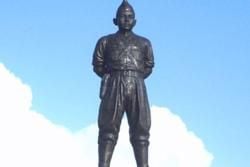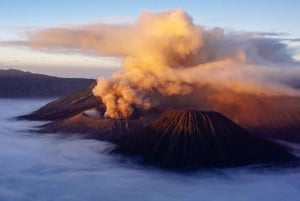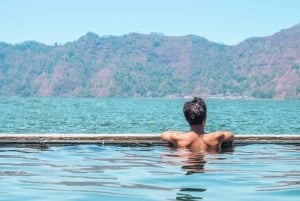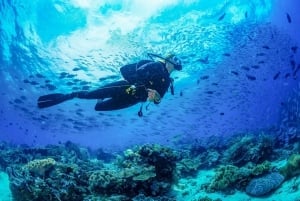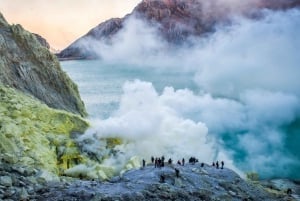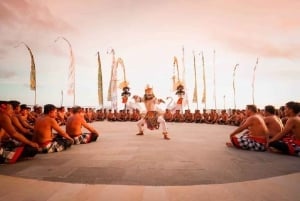History and Culture of Bali
The history of Bali goes back thousands of years. Sembiran, in northern Bali, is believed to have been home to Ice Age inhabitants, evidenced by the discovery of stone axes and other tools. Further archaeological discoveries such as sophisticated stone tools, agricultural techniques and basic pottery at Cekik in West Bali, are evidence of a settlement whose burial sites of around 100 people are believed to be from the Neolithic to the Bronze Age. Massive drums of the Bronze Age, together with their stone moulds, have been found throughout the Indonesian islands. The most famous and largest drum in Southeast Asia, the Moon of Pejeng - nearly two metres wide - is now on view in a temple in east Ubud, Central Bali. In the Bali Museum in Denpasar and Purbakala Museum in Pejeng, there are collections of carved stone sarcophagi from a sophisticated civilisation.
Bali's earliest written records, prasasti, or metal inscriptions, from the 9th century AD, show a significant Buddhist and Hindu influence. This is especially true of the statues, bronzes and rock-cut caves around Mount Kawi and Gajah Cave. Balinese society was quite sophisticated by 900 AD. In the Pura Korah Tegipan in the Batur area, the marriage portrait of the Balinese King Udayana to East Java Princess Mahendratta is captured in a stone carving. Their son, Erlangga, succeeded to the throne of the Javanese Kingdom and brought Java and Bali together until his death in 1049. At that time, rice was already being grown under the complex irrigation system known as subak, and there were precursors of the religious and cultural traditions that can be seen in the region today.
Erlangga is reputed to be responsible for the spread of the Hindu influence into Bali from Java. He became one of Java ’s greatest kings, taking back the kingdom lost by his uncle. His mother had moved to Bali and remarried shortly after his birth, so when he gained the throne there was an immediate link between Java and Bali. The rock-cut memorials seen at Gunung Kawi (Mt. Kawi) near Tampaksiring are a clear architectural link between Bali and 11th-century Java.
After Erlangga’s death, Bali retained its semi-independent status until Kertanagara became king of the Singasari dynasty in Java, and conquered Bali in 1284 - but after only eight years his kingdom collapsed. With Java in turmoil, Bali regained its autonomy and the Pejeng dynasty, centred near modern-day Ubud, rose to great power. In 1343 Gajah Mada, the legendary chief minister of the Majapahit dynasty, defeated the Pejeng king Dalem Bedaulu and brought Bali back under Javanese influence. This resulted in massive changes in Balinese society, including the introduction of the caste system.
Tribal Balinese who did not like the changes fled to isolated and remote mountainous areas. Their descendants are today known as Bali Aga or Bali Mula, meaning "original Balinese". They still live apart in villages like Tenganan near Dasa Temple, and Trunyan on the shores of Lake Batur; there they maintain their ancient laws and traditional ways.
Although Gajah Mada brought much of the Indonesian archipelago under Majapahit control, Bali was the furthest extent of its power. The capital moved to Gelgel, near modern-day Semarapura (formerly Klungkung), around the late 14th century, and for the next two centuries this was the base for the King of Bali, the Dewa Agung. The Majapahit kingdom collapsed into disputing sultanates. However, the Gelgel dynasty in Bali, under Dalem Batur Enggong, extended its power eastwards to the neighbouring island of Lombok and crossed the strait to Java on its west side.
When Majapahit in East Java fell in 1515, the many small Islamic kingdoms on the island merged into the Islamic Mataram empire. Majapahit's most dedicated Hindu priests, craftsmen, soldiers, nobles and artists fled east to Bali, and flooded the island with Javanese culture and Hindu practices. The refugees included the priest Nirartha, who is credited with introducing many of the complexities of Balinese religion to the island. Considering the huge influence and power of Islam at the time, one can only wonder why and how Bali still remained strongly Hindu.
Batu Renggong, also known as Dewa Agung, meaning "great god", became king in 1550, and this title became hereditary through the succeeding generations of the Kingdom of Gelgel, and later Klungkung, until the 20th century. Bali's decline began when Batu Renggong's grandson, Di Made Bekung, lost Blambangan, Lombok and Sumbawa. DI Made Bekung's chief minister, Gusti Agung Maruti, eventually rebelled and reigned from 1650 until 1686, when he in turn was killed by DI Made Bekung's son, Dewa Agung Jambe, who then moved the court to Klungkung, and named his new palace the Semarapura: Abode of the God of Love.
The first Europeans - Dutch sailors - were seen in Bali in 1597. In 1602 a group of Dutch merchants and independent trading companies, impatient with the monopoly the Portuguese had established over the spice trade with East Asia at the end of the 15th century and keeping the British imperial merchants in check, founded the Vereenigde Landsche Ge-Oktroyeerde Oostindische Compagnie, the VOC, better known as the Dutch East India Company. The executive directorate of the VOC was called the Heeren Sewentien or the "Lords Seventeen".
The VOC was granted a government charter, which effectively guaranteed it a spice trade monopoly in East Asia. However, this government charter secured the VOC more than a trade monopoly: it gave the VOC the power to colonise whichever territory it desired, enslaving the indigenous people according to market requirements and VOC political imperatives. This meant that the VOC did not merely become involved in trade wars with European and Asian powers from its headquarters in Batavia, but waged full-scale warfare on indigenous people in those countries that would not cooperate with its demands for spices such as cloves, nutmeg and pepper, or who resisted the cash-crop economy that the VOC was forcing onto them by establishing plantations. A prime example is the island of Banda in the Indonesian Archipelago. The VOC simply killed off the Bandanese, appropriated the island, and cultivated nutmeg as a monoculture, using slave labour from neighbouring countries.
The VOC monopoly of the spice trade meant that it set the prices of commodities, their production and availability. In addition the VOC developed the world's first stock market in Amsterdam, with durable assets and controlled investment schemes. As a result, a number of trading stations were built across East Asia. In 1652 Jan van Riebeeck had "taken over" the Cape of Good Hope and established a replenishment station, using political prisoners brought from Batavia and other Asian islands. In terms of trade and commerce, Holland reached the height of its power in this period.
In 1710 the capital of the Gelgel kingdom of Bali shifted to Klungkung (now Semarapura), but local discontent was growing, lesser rulers were breaking away from Gelgel domination and the Dutch began to move in, using the old policy of divide and conquer. In 1846 the Dutch used Balinese salvage claims over shipwrecks as the pretext to land military forces in northern Bali. In 1894 the Dutch chose to support the Sasaks of Lombok, which had been invaded by the Balinese. After a rebellion against their Balinese Rajah in bloody battles, the Balinese were defeated in Lombok, and northern Bali came firmly under Dutch control.
The Dutch could not gain control over South Bali for some years, but later "salvaging disputes" gave them the excuse they needed to move in. A Chinese ship was wrecked off Sanur in 1904 and ransacked by the Balinese. The Dutch demanded that the rajah of Badung pay 3000 silver dollars in damages – this was refused. In 1906 Dutch warships appeared at Sanur and started a naval bombardment of Denpasar and then commenced their final assault. Their forces landed and, despite Balinese opposition, marched to the outskirts of Denpasar.
The three rajahs of Badung (southern Bali) realised that they were outnumbered and outgunned, and that defeat was inevitable. Surrender and exile, however, was the worst imaginable outcome, so they decided to take the honourable path of a suicidal puputan – a fight to the death. Row after row of the Balinese nobility and their servants marched forward to their deaths. In all, nearly 4000 Balinese died in the puputan. Later, the Dutch marched towards Tabanan and took the rajah of Tabanan prisoner, but he committed suicide rather than face the disgrace of exile.
The kingdoms of Karangasem and Gianyar had already capitulated to the Dutch and were allowed to retain some powers, but other kingdoms were defeated and the rulers exiled. Finally, the rajah of Klungkung followed the lead of Badung and once more the Dutch faced a puputan. With this last obstacle disposed of, all of Bali was under Dutch control and became part of the Dutch East Indies. Dutch rule over Bali was short-lived, however, as Indonesia fell to the Japanese in WWII.
Independence
When Japan was defeated and had to leave the Dutch East Indies, British Colonel Laurens van der Post was made Allied Commander of the country. It was quite an irony that an English South African with a Dutch father and German mother had to tell the Dutch troops landing back in "their" Indies that they were no longer welcome. He saw the events which brought about Indonesian political change. On 17 August 1945, the Indonesian leader Soekarno proclaimed the nation’s independence. In a virtual repeat of the puputan, nearly half a century earlier, a Balinese resistance group was wiped out by Dutch troops in the Battle of Marga, on 20 November 1946. Bali’s Ngurah Rai Airport is named after the group's leader and his 96 troops. It was not until 1949 that the Dutch finally recognised Indonesia’s independence.
A massive eruption of Gunung Agung in 1963 killed thousands, devastated vast areas of the island and forced many Balinese to accept transmigration to other parts of Indonesia. Two years later, in the wake of an attempted communist coup, Bali became the scene of some of the bloodiest anti-communist killings in Indonesia.
The tourism boom, which started in the early 1970s, has brought many changes, and has helped pay for improvements in roads, telecommunications, education and health. Bali’s unique culture has proved remarkably resilient to tourism’s influence. Beginning in the 1990s there has been vocal public opposition to some controversial developments, which indicates that Balinese people will play a more active role in the future of their island.
Bali, like most places, has also been affected by global politics. In October 2002, two simultaneous bomb explosions in Kuta – targeting an area frequented by tourists – injured or killed more than 500 people. The island’s vital tourist industry was dealt a severe blow. It had mostly recovered by 2005, when in October of that year more bombs went off, albeit with less loss of life. Still, the bombs caused an immediate sharp drop in tourism and have forced the Balinese to yet again ponder their role in the world’s greater geopolitics. Fortunately, memories have faded a bit, and tourism has returned to Bali in a big way.
____________________________________________________________________________________________________



